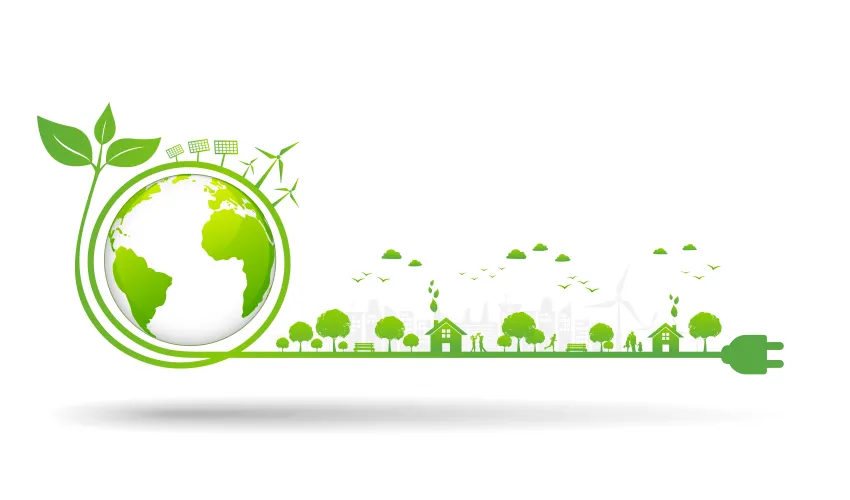
The era of renewable sources
Promoting sustainable development has a much broader meaning than satisfying energy demand via renewable sources. However, there is no doubt that the nexus between sustainability, the fight against climate change and the replacement of fossil fuels to reduce greenhouse gas emissions has projected renewable sources to the top of the agenda of global energy policy. However, we must not forget that 2021 the weight of modern renewables in meeting world energy demand was still only 13.5% (BP data), while the fossil-fuel triad (oil, coal and gas) contributed for 82.3%. We are therefore still fully living in the era of fossil fuels. How long will it take to fully enter the new era?
In fact, the first thing to bear in mind is that transition times are very long because the energy system has a strong inertia. For example, over the last ten years (2011-2021), the share of renewables in world energy consumption has grown by only 6% (from 7.2 to 13.5%) despite strong public incentives. If renewables worldwide still have a relatively modest weight, it is because there are sectors where their use is difficult or not very economical: they are the hard-to-abate industries, like aviation and shipping, industrial or civilian thermal uses, where replacing fossil fuels is more difficult.
The case of electricity is different. In 2011, the weight of renewables in electricity production was 20%, but 16% of this was due to hydroelectric energy which for more than a century has played an important role in electrification. But in these ten years the world of renewables has changed significantly: wind and solar production has grown enormously, so that green energy now accounts for 28% of world electricity production in 2021.



For the future, wind energy and solar energy are called to play a fundamental role in achieving the goal of "zero emissions" of carbon dioxide. All scenarios indicate that solar and wind power will be decisive in the coming decades, even if the actual development may turn out very different from predictions. The International Energy Agency (IEA) in its World Energy Outlook of 2021 has considered four scenarios ranging from the mere continuation of the policies in place (scenario called STEPS) to the more proactive scenario that aims to achieve Net-Zero Emissions (NZE) by 2050.
In the middle there are two scenarios with an intermediate development of renewables, if the policies already announced (APS) will be implemented or if more ambitious ones (SDS scenario) will be launched to move more decisively towards sustainable development. To understand the effort under way, but also the diversity of possible outcomes, it is sufficient to consider that, starting from 1500 GW of installed power in 2020, in the current decade new photovoltaic arrays and wind turbines would be put into service reaching the scale of 2700 GW (million kW) for the STEPS scenario and a staggering 6600 GW in the NZE scenario. By 2050, the difference in prospective outcomes will be even more gaping because it would involve building solar and wind power plants for a total of almost 7700 GW in thirty years in the STEPS scenario, rising to 21000 GW in the NZE scenario.
Unfortunately, these figures do not mean much to the average person who thus fails to appreciate the extent of the gargantuan effort required. To get an idea, assuming that half of solar power is placed on the roofs of buildings (according to EU target recently announced by the European Commission for the EU), in the case of the sustainable development scenario (SDS), about 75 million homes need to install PV panels on theirs roofs by 2030, and nearly 300 million homes by 2050 (each with an 18 kW system).
The effort to decarbonize the energy system is therefore daunting and does not only concern solar and wind power, but also other renewable sources, as well as hydrogen, the development of smart grids, batteries (given that energy must be stored since sun and wind are intermittent) and the diffusion of all technologies that improve energy efficiency and, where possible, the electrification of processes. The ongoing and prospective transformation of the energy system therefore requires massive investments, and the will is there from the point of view of energy operators, as well as financial actors increasingly oriented towards sustainable investments, provided there is a way to recoup the investment in reasonable times and under conditions of regulatory certainty.
However, imagining that we can leapfrog in a short time towards a world made entirely made of renewable sources, and that everything depends on "political will", is an error that risks deceiving public opinion. The road to the development of renewables is sown with economic, technical, environmental and social hurdles and the best way to overcome them lies not in lofty proclamations, but in keeping all the relevant players committed to the target of decarbonization.